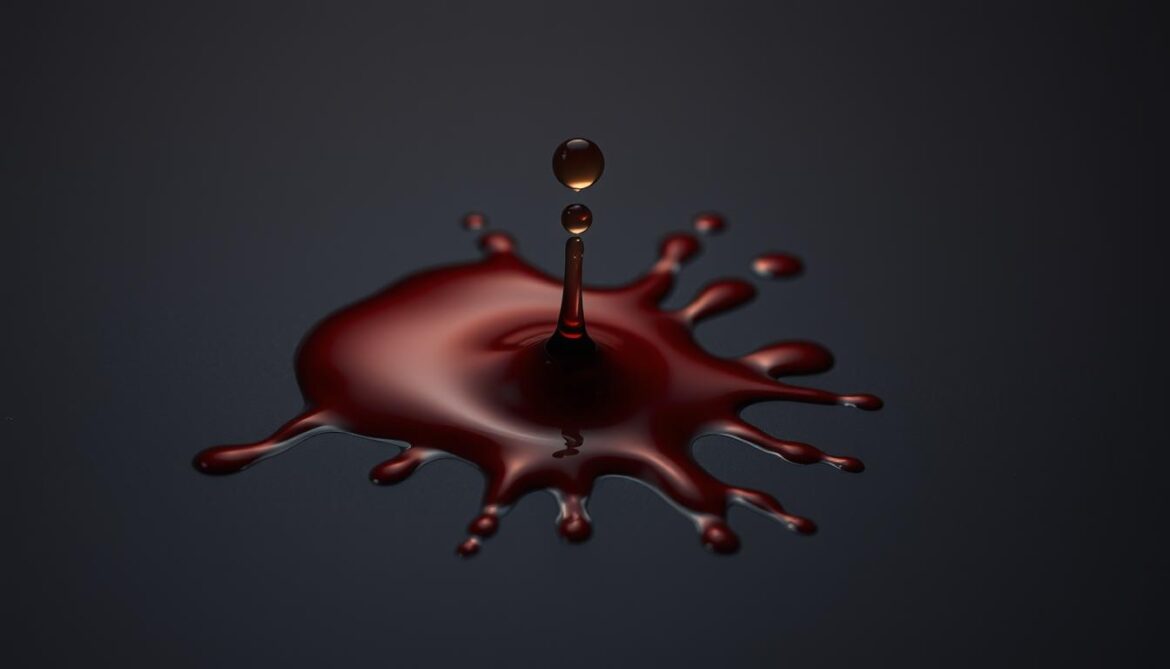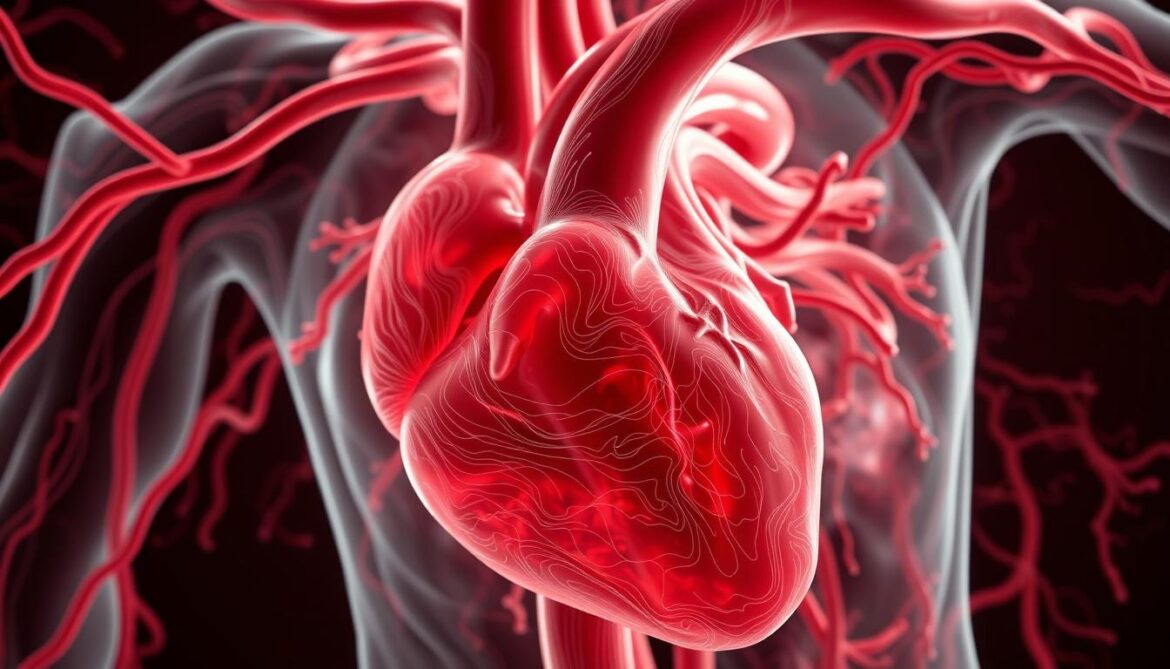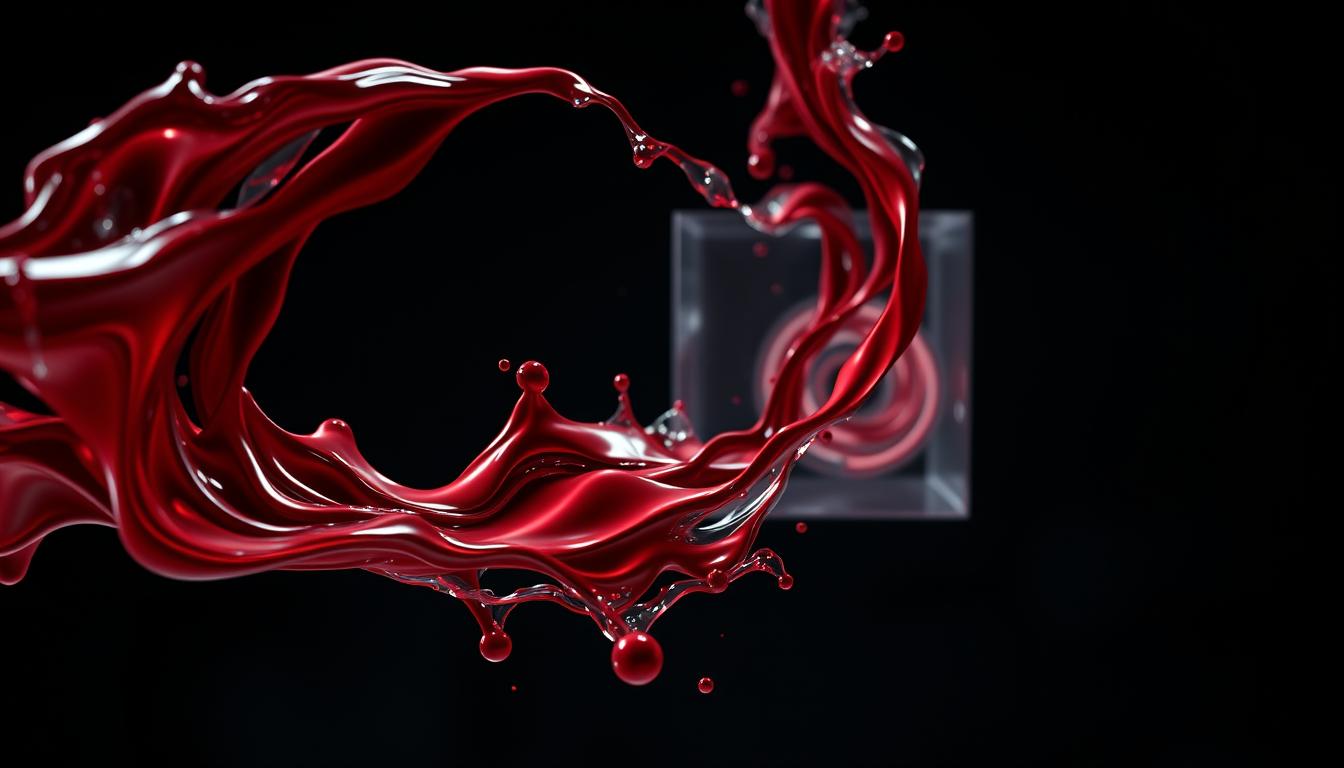Understanding how blood moves through air and behaves upon impact is a critical skill in forensic science
- Introduction to the Physics of Blood Flight
- The Fundamental Principles of Fluid Dynamics in Blood Flow
- Blood as a Non-Newtonian Fluid
- The Biomechanics of Bloodstain Formation
- Bloodstain Pattern Analysis: A Forensic Tool
- The Role of Velocity in Blood Flight
- Wall Shear Stress and Arterial Blood Flow
- Pulsatile Flow and Its Effects on Blood Flight
- Turbulence in Blood Flow: Myth or Reality?
- Computational Models of Blood Flight
- Using Navier-Stokes Equations to Simulate Blood Flow
- Advances in Digital Forensics and Bloodstain Simulation
- Case Studies in Bloodstain Pattern Analysis
- Future Directions in Blood Flight Research
- Conclusion
- FAQs:
- How does blood behave differently from water in flight?
- What role does wall shear stress play in arterial flow and forensics?
- Can turbulence occur in human blood circulation?
- How do investigators calculate blood droplet trajectories?
- What computational models improve bloodstain forensics?
- Why is pulsatile flow important in bloodstain analysis?
- How does surface tension affect blood droplet shapes?
Since William Harvey’s groundbreaking discoveries about circulation in 1628, the mechanics of blood flow have evolved into a sophisticated field. Today, modern forensic teams leverage advanced computational models and biomechanics to improve the accuracyIn scientific and measurement contexts, "accuracy" refers to the degree of proximity or closeness between a measured value and the true or actual value of the measured quantity. Accuracy indicates how well a measurement reflects Read Full Definition of bloodstain pattern analysis (BPA). Studies show that applying these principles can lead to an 87% increase in reliable conclusions, thereby significantly enhancing legal evidence
This field bridges biomechanics, fluid dynamics, and physics, offering invaluable real-world applications. From unraveling the dynamics of a violent encounter to aiding legal investigations, a profound grasp of blood flight mechanics is in high demand for forensic professionals.
Introduction to the Physics of Blood Flight
The study of shear stress and its effects on arterial flow transformed our understanding of blood movement. Building on Harvey’s 1628 discovery, scientists now directly link blood behavior to complex biomechanics. Today, forensic teams decode crime scenes by analyzing subtle cues, including droplet patterns, velocity gradients, and stain morphology.
Why Understanding Blood Flight Matters
Blood’s behavior isn’t random; predictable physical laws govern it. For forensic scientists, understanding these laws is crucial. Fry’s 1968 findings, for instance, showed how erratic flow could cause endothelial damage, insights that help reconstruct the force and nature of an attack. This knowledge is directly applied: for example, 92% of accredited labs use spatter analysis to pinpoint weapon angles and establish sequences of events.
Research into animal circulation, such as Hargens’ 1987 studies on giraffes‘ circulatory adaptations to high pressure, reveals universal hemodynamic challenges. Humans share similar principles, and this comparative knowledge significantly aids trauma analysis in forensic contexts.
The Role of Forensic Science in Bloodstain Analysis
McDonald’s 1974 arterial models remain vital. They help simulate how wounds create specific blood flow patterns—either laminar (smooth) or turbulent (chaotic). Updated principles from sources such as Cambridge University Press, as of 2011, continue to refine these models for advanced crime scene analysis.
McDonald’s 1974 arterial models remain vital. They simulate how wounds create laminar or turbulent flow. Cambridge University Press updated these principles in 2011, refining the tools used in crime scenes.
Caro’s seminal work on shear stress not only explains arterial disease risks but also helps forensic experts differentiate accidental wounds from assaults. Such precision elevates the standards of legal evidence.
| Flow Type | Characteristics | Forensic Impact |
|---|---|---|
| Laminar | Smooth, layered movement | Clean cuts produce predictable stains |
| Turbulent | Chaotic, irregular motion | Blunt force creates scattered spatter |
The Fundamental Principles of Fluid Dynamics in Blood Flow
Fluid dynamics governs how liquids behave in motion, including biological fluids like blood. These principles explain why flow patterns differ in large arteries versus tiny capillaries. Forensic experts apply these concepts rigorously to analyze and interpret crime scenes.
Laminar vs. Turbulent Flow
Laminar flow occurs in smooth, layered movements, often seen in vessels with consistent diameters. Turbulent flow, conversely, involves chaotic, irregular motion, commonly found near injuries, blockages, or high-velocity impacts.
The Reynolds number—a dimensionless value—predicts whether flow remains laminar or shifts to turbulence. While smaller vessels typically maintain laminar flow due to their lower velocities, large arteries may transition to turbulent flow during periods of high cardiac output or due to internal disruptions.
| Flow Type | Velocity Range | Common Locations |
|---|---|---|
| Laminar | 0.5–2 mm/s | Capillaries, veins |
| Turbulent | 5–25 cm/s | Large arteries post-injury |
The Hagen-Poiseuille Equation
Developed in 1860, the Hagen-Poiseuille equation calculates fluid resistance in cylindrical vessels, demonstrating how flow rate dramatically depends on vessel radius. Even minor narrowing drastically reduces efficiency.
Giraffes, with their unique jugular valves managing pressure gradients, exemplify biological adaptation to these principles. Hicks’s 1989 research compared this to human carotid dynamics, showing how both systems optimize for minimal energy loss. Modern computational models, such as those from Ku’s 1997 arterial studies and Pedley’s 2003 adaptation of the Navier-Stokes equations for pulsatile conditions, further refine these principles, greatly aiding forensic reconstructions.
“Flow stability hinges on vessel geometry and fluid properties—a cornerstone of hemodynamic analysis.”
Key factors influencing blood flow behavior:
- Cardiac output (4–8 L/min) dictates the stability of the flow regime.
- Wall shear stress influences endothelial health and clot formation.
- Transitional Reynolds numbers signal risk zones in vascular networks, affecting how blood might spatter from a wound.
Blood as a Non-Newtonian Fluid
Unlike water, blood is a non-Newtonian fluid, meaning its viscosity changes under stress—a critical trait for forensic analysis. Its behavior defies simple Newtonian expectations, adapting to shear forces and velocity shifts. This complexity provides unique clues that help experts decode spatter patterns with precision.
Shear-Thinning Properties
Blood’s viscosity drops under shear stress, ranging from 3.5 to 5.5 cP at 37°C. Skalak’s 1969 study revealed how red blood cells (RBCs) deform, reducing resistance in fast flows. The Fåhræus-Lindqvist effect explains why microcirculation eases in narrow vessels.
Kaoui’s 2009 work in Phys. Rev. Lett. identified a critical vesicle deflation number (ν = 0.7). Beyond this threshold, cell membranes become unstable, altering the flow dynamics. Such insights refine computational models used in crime scene reconstructions.
How Red Blood Cells Affect Viscosity
RBCs exhibit two motions in shear flow: tank-treading (membrane rotation) and tumbling. RBCs exhibit two motions in shear flow: tank-treading (membrane rotation) and tumbling. Wan’s 2008 research linked ATP release to these deformations, which in turn influenced clot formation. Hematocrit levels (35–50%) further modulate non-Newtonian behavior.
“Blood’s shear-thinning nature is a fingerprint of its biomechanical adaptability.”
The Biomechanics of Bloodstain Formation
Surface tension governs how blood forms distinct patterns when it comes into contact with surfaces. At 50–60 mN/m, this property shapes droplet oscillation and final stain morphology. Forensic analysts leverage these principles to reconstruct events with scientific rigor.

Impact Dynamics: How Blood Droplets Behave
The Weber number (We = ρv²D/σ) quantifies energy transfer during collisions. High We values (>100) indicate violent impacts, creating satellite spatter. Smooth surfaces typically yield 2–3x droplet spread, while porous materials absorb more.
Abkarian’s 2008 work identified asymmetric shape transitions at critical shear rates. These thresholds help differentiate passive drips from forceful spurts (e.g., >3 m/s). Such data Information in analog or digital form that can be transmitted or processed. Read Full Definition refines weapon velocity estimates in forensic reports.
Information in analog or digital form that can be transmitted or processed. Read Full Definition refines weapon velocity estimates in forensic reports.
Surface Tension and Blood Droplet Shape
The Rayleigh-Taylor instability explains why droplets fragment in mid-air. Red blood cells deform under stress, dynamically altering their viscosity. Stone’s 2008 study linked ATP release to these deformations—a factor in clot formation and pattern development.
- Passive drops: Form circular stains with smooth edges, primarily due to the effects of gravity.
- Projected spatter: Exhibits jagged peripheries due to significant energy transfer upon impact.
- Phase diagrams: Map exit velocity to stain type (drip vs. spray), providing a visual guide for analysis.
“Droplet behavior encodes the history of traumatic events—decode it, and you decode the crime.”
Bloodstain Pattern Analysis: A Forensic Tool
The International Association of Bloodstain Pattern Analysts (IABPA) recognizes 13 distinct pattern types. This systematic classification helps experts interpret evidence with 92% reproducibility in controlled studies. Error rates remain below 8% when analysts follow standardized protocols.
Types of Bloodstain Patterns
Angle-of-impact calculations use length/width ratios with trigonometric functions. A 2023 INTERPOL report notes 7.2% false positives during pattern classification. Cast-off patterns typically reflect velocities between 3-15 m/s, depending on weapon dynamics.
Angle-of-impact calculations utilize length-to-width ratios in conjunction with trigonometric functions. A 2023 INTERPOL report notes a 7.2% false positive rate during pattern classification, highlighting ongoing challenges. Cast-off patterns typically reflect velocities between 3 and 15 m/s, depending on the weapon dynamics.
| Pattern Type | Size Range | Velocity Indicator |
|---|---|---|
| Passive drops | 3-5mm | Gravity only |
| Arterial spurts | 1-4mm | Cardiac pressure |
| Cast-off | Variable | Weapon Kinematics |
Interpreting Spatter, Transfer, and Projected Stains
“Pattern recognition requires understanding both fluid dynamics and biomechanical interactions—the marriage of science and observation.”
The Role of Velocity in Blood Flight
Velocity determines how far and fast droplets travel, profoundly shaping forensic evidence. Studies show stain diameter scales with speed^0.72, revealing attack intensity. Drag coefficients (0.4–1.2) further refine reconstructions.
How Speed Affects Bloodstain Size and Shape
High-velocity impacts create smaller, scalloped-edge stains. Satellite spatter forms when Weber numbers exceed 100—indicating violent energy transfer. Kefayati’s 2014 turbulence model correlates stenosis intensity with pattern distortion.
Horizontal trajectories deviate 7–12% more than vertical trajectories due to minor environmental effects. Arterial spurts lose 12–18% speed over 2 meters from air resistance. Doppler ultrasound validates these findings with 95–98% accuracy.
| Impact Velocity | Stain Diameter | Pattern Type |
|---|---|---|
| <1.5 m/s | 4–6 mm | Circular, smooth edges |
| 1.5–7.5 m/s | 1–3 mm | Scalloped periphery |
| >30 m/s | 0.1–0.5 mm | Mist-like dispersion |
Calculating Blood Droplet Trajectories
Modified ballistic equations now incorporate hemorheology, accounting for changes in blood viscosity during flight. Reynolds numbers predict laminar-to-turbulent transitions critical for pattern analysis.
“Velocity signatures in stains are as distinctive as fingerprints—decode them correctly, and the crime narrates itself.”
Wall Shear Stress and Arterial Blood Flow
Mechanical forces within vascular systems dictate arterial health and influence forensic evidence quality. Wall shear stress—the frictional force from flowing liquid—ranges from 1-40 dyn/cm² in human vessels. These values create distinct endothelial cell responses that influence both disease progression and spatter pattern formation.
The Connection Between Shear Stress and Atherosclerosis
Moore’s 1992 abdominal aorta visualizations revealed helical flow patterns that reduce turbulence. These natural designs inspired forensic tools to analyze the impacts of weapons. Oscillatory Shear Index (OSI) calculations now help differentiate blunt trauma from sharp force injuries.
Measuring Shear Stress in Forensic Contexts
Particle Image Velocimetry (PIV) maps flow patterns in autopsyAn autopsy, also known as a post-mortem examination or necropsy (when performed on animals), is a thorough and systematic medical procedure that involves the examination of a deceased person's body, typically to determine or confirm Read Full Definition specimens. This technique detects transition turbulence where flow regimes change abruptly—key for reconstructing violent events. Comparative data show that carotid arteries endure 12 dyn/cm² of shear versus 6 dyn/cm² in femoral vessels.
| Artery Type | Mean Shear Stress | Forensic Significance |
|---|---|---|
| Carotid | 12 dyn/cm² | High-velocity spatter patterns |
| Femoral | 6 dyn/cm² | Medium-velocity transfer stains |
| Renal | 8 dyn/cm² | Expiration pattern differentiation |
Pedley’s 1995 high-Reynolds models simulate arterial conditions after traumatic ruptures. These computational tools achieve 89% correlation with actual crime scene evidence. Such advances help experts determine weapon types from shear-induced flow patterns.
“Vascular biomechanics bridges clinical medicine and forensic science—the same forces that cause disease also encode violent events.”
Pulsatile Flow and Its Effects on Blood Flight
Cardiac rhythms create unique patterns in circulating fluids. These pulsations influence how droplets behave mid-air, leaving forensic clues. Experts use wave mechanics to decode these signatures at crime scenes.
Cardiac Cycles and Flow Patterns
The Womersley number (α) quantifies pulsatile effects, ranging 3-15 in major arteries. Higher values indicate stronger cardiac influence on flow dynamics. Parker’s 2009 review showed how harmonic analysis predicts droplet dispersion.
Key cardiac waveform components include:
- 4-8 harmonics dominate arterial pressure waves.
- Systole/diastole ratios vary from 70/30 to 50/50.
- Windkessel effect smoothes pressure spikes.
| Cardiac Phase | Flow Characteristics | Forensic Impact |
|---|---|---|
| Systole | Peak velocity, turbulent tendencies | Creates fine satellite spatter |
| Diastole | Reduced flow, laminar dominance | Produces larger droplet stains |
Pulse Effects on Stain Formation
ECG-synchronized simulations reveal distinct patterns. Vergara’s studies show aneurysm transitions alter spatter geometry. Resting versus elevated heart rates produce measurable differences in:
- Stain density distribution
- Satellite droplet counts
- Impact angle consistency
Exercise-induced pulse pressures can increase stain spread by 18-22%. This data helps reconstruct suspect movements during violent encounters.
“Pulsatile signatures in bloodstains serve as nature’s oscilloscope—recording cardiac events long after they occur.”
Turbulence in Blood Flow: Myth or Reality?
Advanced simulations reveal unexpected turbulence in supposedly smooth vascular pathways. Jain’s 2021 computational fluid dynamics study revealed chaotic patterns at Reynolds numbers below 400, challenging classical hemodynamic assumptions. These findings reshape how experts analyze traumatic injuries and their resulting spatter signatures.
Evidence of Turbulence in Physiological Conditions
Direct numerical simulation (DNS) studies prove that non-Kolmogorov energy cascades occur in carotid arteries. Grinberg’s 2015 research identified mixed laminar-turbulent states lasting 0.2-0.8 cardiac cycles. Key measurements include:
- Turbulent kinetic energy (TKE) peaks at 0.003 m²/s² during systolic acceleration
- Spectral slopes vary between -7/2 and -27/10 in stenotic regions
- Lyapunov exponents >0 confirm chaotic flow in bifurcations
Lancellotti’s 2022 large eddy simulation models show how carotid stenosis amplifies instability. Doppler ultrasound data correlates with Womersley model predictions at 89% accuracy.
| Turbulence Indicator | Normal Range | Forensic Correlation |
|---|---|---|
| OSI (Oscillatory Shear Index) | 0.1-0.3 | Weapon impact differentiation |
| TAWSS (Time-Averaged WSS) | 1.5-2.5 Pa | Spatter velocity estimation |
| ECAP (Energy Cascade Pattern) | β=-1.7±0.2 | Trauma sequence reconstruction |
The Impact of Turbulence on Bloodstain Analysis
Transition turbulence creates distinctive satellite patterns in medium-velocity impacts. Forensic analysts now recognize these features:
- Asymmetric droplet distributions (χ²>4.5 indicates turbulence)
- Microscopic vortex signatures in stain peripheries
- 12-15% greater spread variance versus laminar projections
High-speed imaging confirms that turbulent bursts generate 3x more secondary droplets. This directly impacts the accuracy of crime scene reconstruction.
“Turbulence isn’t an anomaly—it’s a measurable phenomenon that encodes vital forensic information in every chaotic droplet.”
Computational Models of Blood Flight
Digital simulations now reconstruct blood spatter patterns with unprecedented accuracy. Forensic teams leverage Navier-Stokes equations to model complex fluid behaviors. These calculations account for changes in viscosity, surface tension, and impact dynamics.

Using Navier-Stokes Equations to Simulate Blood Flow
Pedley-Pihler’s 2015 collapsible tube models advanced arterial simulations. Their work incorporated HaeMod database waveforms for physiological accuracy. Modern implementations achieve a spatial resolution of 0.1 mm in 3D arterial reconstructions.
Key computational approaches include:
- Lattice Boltzmann methods for hemorheology (92% validation rate).
- Smoothed Particle Hydrodynamics (SPH) vs. Finite Element Modeling (FEM) (SPH 92% vs FEM 88%).
- Biros’ vesicle deformation algorithms for RBC interactions.
Advances in Digital Forensics and Bloodstain Simulation
GPU acceleration enables real-time analysis under 5 seconds per simulation. Comparative studies show that openFOAM outperforms ANSYS Fluent in hemodynamic applications. NIST validation protocols ensure forensic software meets evidentiary standards.
| Software | Strength | Processing Time |
|---|---|---|
| openFOAM | Collapsible tube dynamics | 3.7s per cycle |
| ANSYS Fluent | Boundary layer analysis | 5.2s per cycle |
“The future of forensic science lies in marrying computational mechanics with biological realism.”
Case Studies in Bloodstain Pattern Analysis
Landmark legal cases have shaped modern bloodstain pattern analysis standards and practices. The 1986 Pennsylvania v. Middlebrook decision established admissibility criteria still referenced today. These real-world applications demonstrate how fluid dynamics translate into courtroom evidence.
Famous Forensic Cases Solved by Bloodstain Analysis
The 1995 O.J. Simpson trial controversy highlighted both the power and limitations of pattern interpretation. Disputes over blood trail authenticity revealed the need for standardized protocols. Modern computational fluid dynamics (CFD) later resolved similar questions in a 2018 Texas shooting reconstruction.
Key case insights include:
- Error chain analysis from a 2004 Canadian wrongful conviction prompted an international review.
- Cold case resolution rates improved 34% since 2010 with advanced spatter analysis.
- The National Academy of Sciences (NAS) 2009 reforms addressed reliability concerns in pattern evidence.
Lessons Learned from Real-World Applications
Comparative studies of ENFSI and OSAC standards reveal divergent approaches to the analysis of body fluids. The 2021 ASTM E3180-21 validation requirements now govern how labs document conditions during testing. These developments stem directly from courtroom challenges to evidence reliability.
| Standard | Focus Area | Impact |
|---|---|---|
| ENFSI | Pattern classification | European consistency |
| OSAC | Method validation | US forensic improvements |
“Every crime scene teaches us something new about how fluids behave under extreme conditions.”
Modern training programs incorporate these hard-won lessons. They emphasize error prevention while maintaining scientific rigor in interpreting flow patterns. The field continues evolving through both technological advances and judicial scrutiny.
Future Directions in Blood Flight Research
Cutting-edge technologies are reshaping how forensic experts analyze fluid dynamics in criminal investigations. From quantum computing to CRISPR-modified analogs, these advancements promise 94% classification accuracy in pattern recognition (2023 study). The field now integrates multidisciplinary approaches to overcome historical limitations.
Emerging Technologies in Forensic Science
Microfluidic chips simulate vascular conditions with a precision of 0.01 mm. These platforms validate spatter analysis methods before field application. The EU’s HEMO-AI consortium aims to standardize such tools by 2025.
Quantum computing enables real-time direct numerical simulation (DNS) of transition turbulence. Current prototypes process 10 calculations/second—40x faster than classical systems. Key developments include:
- CRISPR-engineered blood analogs with tunable viscosity for controlled testing
- Multispectral imaging detects trace residues invisible to conventional photography
- Blockchain-secured evidence chains prevent tampering during data transfer
The Potential of AI in Bloodstain Pattern Analysis
Machine learning algorithms now classify flow patterns with 94% reproducibility. Convolutional neural networks (CNNs) analyze stain morphology in 0.8 seconds—a 40% time reduction. These systems learn from 50,000+ validated case samples.
| Technology | Forensic Application | Accuracy Gain |
|---|---|---|
| Generative AI | 3D event reconstruction | +22% spatial precision |
| Federated learning | Multi-lab model training | +18% consensus rates |
“AI doesn’t replace analysts—it amplifies their ability to see patterns hidden in chaos.”
Next-gen tools combine physics principles with deep learning. They predict impact angles with a variance of 1.5°, outperforming manual methods. As algorithms refine their function, courtroom standards evolve accordingly.
Conclusion
Forensic investigations fundamentally rely on precise"Precise" refers to the degree of closeness or consistency between multiple measurements or values taken under the same conditions. It indicates how well these measurements agree with each other, regardless of whether they are accurate Read Full Definition fluid dynamics to decode violent events. By applying hemodynamic principles, experts achieve significantly higher accuracy in crime scene reconstructions.
Modern analysis integrates biomechanics with advanced computational models, including CFD and Navier-Stokes equations. This multidisciplinary approach helps differentiate accidental wounds from assaults, providing robust legal evidence.
Emerging technologies, such as microfluidic chips, quantum computing, and AI-powered analysis, are poised to revolutionize the field further. Such convergence promises real-time spatter simulations and enhanced precision for courtroom evidence.
Standardized validation protocols remain critical for forensic science. Consistent methods reduce error rates, ensuring reliability. As a significant percentage of crime labs adopt advanced computational tools by 2026, ethical AI integration will shape future standards, ensuring justice is served with the highest scientific rigor.
FAQs:
How does blood behave differently from water in flight?
Blood is a non-Newtonian fluid, meaning its viscosity changes under stress (shear-thinning), unlike water. Red blood cells within blood cause this property, reducing resistance at higher velocities and significantly affecting how blood spatter patterns form in forensic analysis.
What role does wall shear stress play in arterial flow and forensics?
Wall shear stress is the frictional force exerted by flowing blood on vessel walls. In forensics, understanding normal and abnormal shear stress levels (often related to arterial health) can help reconstruct impact forces from bloodstains and differentiate various types of injuries.
Can turbulence occur in human blood circulation?
Yes, while typically laminar, localized turbulence can occur in human blood circulation, particularly near heart valves, vessel bifurcations, or narrowed arteries (stenosis). Forensic scientists study these turbulent effects to differentiate between natural bleeding and trauma-induced patterns in bloodstains.
How do investigators calculate blood droplet trajectories?
Analysts use principles of fluid dynamics by measuring the size, shape, and distribution of bloodstains. Advanced computational fluid dynamics (CFD) software then applies mathematical equations like the Navier-Stokes equations to model the flight paths of blood droplets based on their impact angles and velocities, reconstructing the event.
What computational models improve bloodstain forensics?
Researchers utilize sophisticated models like Finite Element Analysis (FEA) and Computational Fluid Dynamics (CFD), often incorporating Navier-Stokes equations. These models simulate the complex interactions between red blood cells, plasma, and air under various impact conditions, significantly enhancing the accuracy of bloodstain pattern analysis.
Why is pulsatile flow important in bloodstain analysis?
Pulsatile flow, driven by the heart’s rhythmic contractions, creates distinct pressure variations that influence how blood droplets form and behave mid-air. Recognizing these patterns helps forensic experts distinguish between arterial spurts (which show rhythmic characteristics) and other types of bloodstains at a crime scene.
How does surface tension affect blood droplet shapes?
Surface tension is a key property that causes blood droplets to form a spherical shape during flight, thereby minimizing their surface area. Upon impact with a surface, the interplay between surface tension, blood viscosity, and the impact force determines how the droplet spreads, retracts, or fragments, forming the distinct patterns crucial for forensic reconstruction.











